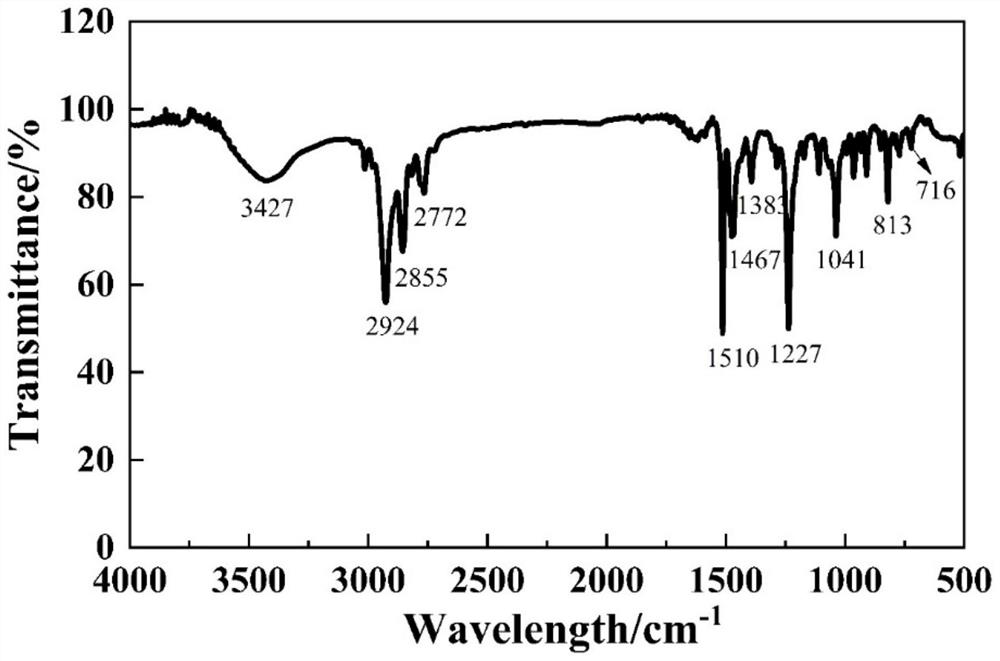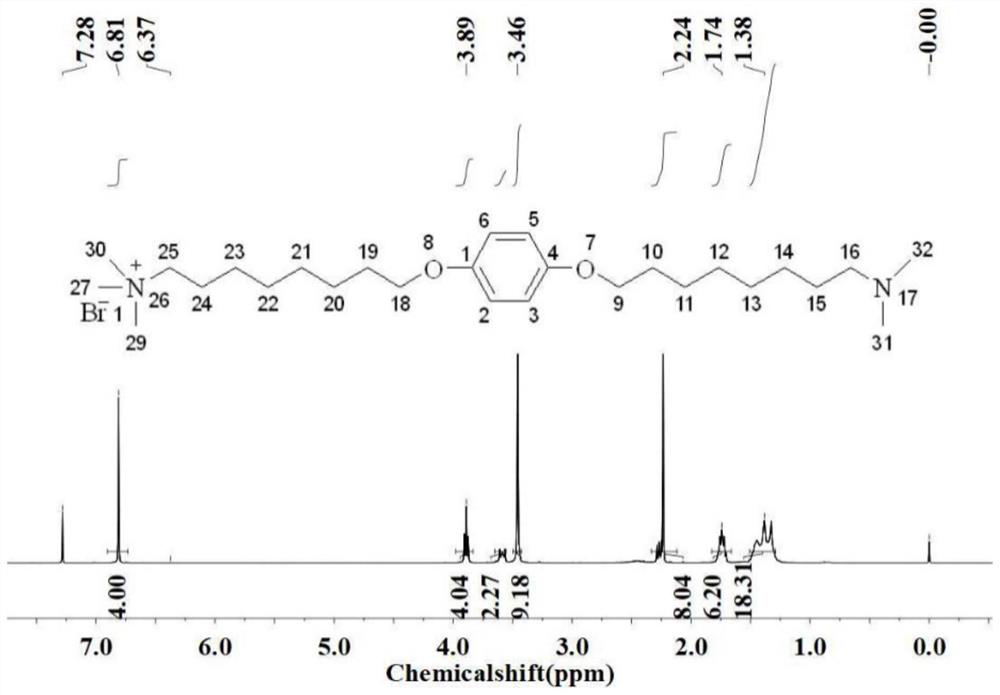Cationic surfactant containing rigid group amphipathicity-strong polarity switching
A surfactant and amphiphilic technology, which is applied in the field of cationic surfactants, can solve the problems affecting the molecular assembly morphology of surfactants and the interface performance of surfactants, so as to achieve the effect of recycling and reusing, and ensuring quality
- Summary
- Abstract
- Description
- Claims
- Application Information
AI Technical Summary
Problems solved by technology
Method used
Image
Examples
Embodiment 1
[0052] Example 1: Preparation of a multi-responsive surfactant containing rigid group amphiphilic-strong polarity intelligent switching
[0053] (1) Acyl chloride reaction: Add 8-bromooctanoic acid solid (30g, 0.135mol) into a three-necked flask equipped with a device for absorbing tail gas and a reflux condenser, and add three drops of N,N-dimethylformamide as a catalyst , slowly added thionyl chloride (21 g, 0.178 mol) dropwise. The reaction temperature was 60° C., and the reaction was carried out for 1 h. Excess thionyl chloride was removed using a rotary evaporator to obtain Intermediate I.
[0054] (2) Amidation reaction: put dimethylamine hydrochloride (14g, 0.172mol) and triethylamine (50g, 0.494mol) in a low-temperature reactor at -10°C, and add intermediate Ⅰ (32.61g, 0.135mol) dropwise ) in dichloromethane solution, react for 2 hours after the end, and then extract the reaction solution with water for more than three times to remove excess triethylamine and dimethyl...
Embodiment 2
[0064] Embodiment 2: the application of multi-responsive surfactant in the preparation of emulsion
[0065] Surfactant N-8P-N synthesized with embodiment 1 + Prepare a series of surfactant aqueous solutions with different concentrations, wherein, under neutral conditions, the molar concentrations of surfactants relative to the aqueous phase are: 2mM, 3mM, 4mM, 5mM, 6mM, 7mM, 10mM; The molar concentration of the aqueous phase is as follows: 4mM, 5mM, 6mM, 7mM, 10mM. Take 7mL and add it to a 25mL glass bottle, add 7mL of n-decane, and emulsify with a high-shear homogenizer for 2min to obtain a stable O / W type conventional emulsion, such as Image 6 shown.
[0066] Follow-up test on the stability of the above-mentioned type of emulsion, when N-8P-N + When the concentration is 4mM, the emulsion can be stable for one month without breaking, and has good stability.
[0067] pH stimulus-response properties of emulsions:
[0068] In a 25 mL glass vial, prepare 7 mL of 4 mM N-8P-N...
Embodiment 3
[0072] Referring to Example 2, 7mL of 3mM surfactant aqueous solution was added to a 25mL glass bottle, 7mL of n-decane was added, and a high-shear homogenizer was used to homogeneously emulsify for 2min to obtain the corresponding emulsion product.
[0073] Only replace the surfactant with N-C respectively 16 -N + , N-3P-N + (n=3), N-5P-N + (n=5), N-9P-N + (n=9), N-10P-N + (n=10), and other conditions remain unchanged, the corresponding emulsion is obtained. The resulting emulsion was placed at room temperature to measure its stability; and the pH response performance was tested by adjusting the pH with reference to the method in Example 1. The performance results of the obtained emulsion are shown in Table 2.
[0074] Among them, N-C 16 -N + The structure is:
[0075] The emulsifying performance result of table 2 different surfactants
[0076]
PUM
 Login to View More
Login to View More Abstract
Description
Claims
Application Information
 Login to View More
Login to View More - R&D
- Intellectual Property
- Life Sciences
- Materials
- Tech Scout
- Unparalleled Data Quality
- Higher Quality Content
- 60% Fewer Hallucinations
Browse by: Latest US Patents, China's latest patents, Technical Efficacy Thesaurus, Application Domain, Technology Topic, Popular Technical Reports.
© 2025 PatSnap. All rights reserved.Legal|Privacy policy|Modern Slavery Act Transparency Statement|Sitemap|About US| Contact US: help@patsnap.com



